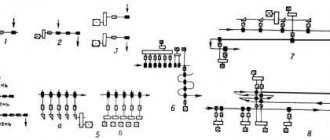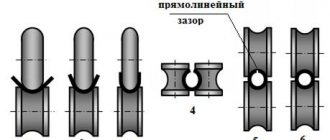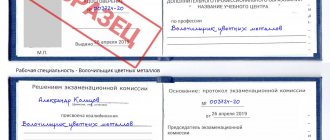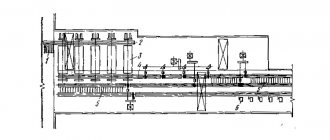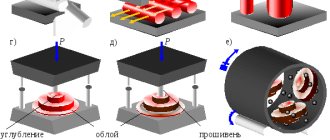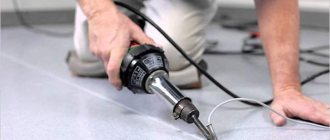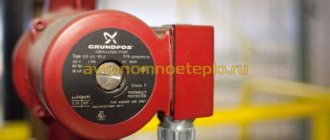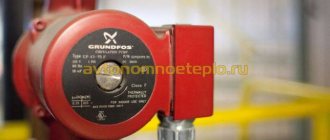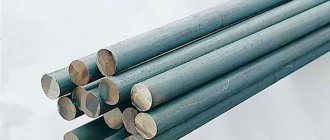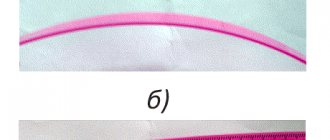Description of the profession
A roller is a worker who knows how to work with a special tool to deform sheet material. This procedure is called rolling, as is the apparatus itself with which it is carried out. It is from them that the name of the profession comes.
In production, the main task of a roller is to monitor the equipment, which must always be in working order, and also to carry out procedures for deforming materials. At the same time, he must monitor the progress of the operation and, if necessary, make adjustments to the operation of the equipment. Otherwise, he will not be able to ensure that the resulting product meets the specified parameters.
Since the roller is responsible for the performance of the tool entrusted to him, his responsibilities also include preparing the equipment and setting it up before use, inspecting the tool, carrying out basic repair work, and replacing worn-out parts. If technical problems arise that the specialist himself cannot either eliminate or determine, he must inform senior management about the problems that have arisen.
In addition, a qualified rolling operator must be able to take readings from instruments and carry out initial quality control of the created product in order to screen out defects.
This is interesting: Electric arc welding - types, methods, technology
§ 5. Cold metal rolling machine of the 6th category
Characteristics of the work . Conducting the process of rolling strips on automated multi-stand and multi-roll rolling mills and rolling titanium, tungsten, molybdenum, niobium, zirconium alloys. Rolling foil in double form with simultaneous squeezing. Management of the serviced mill and its adjustment.
Must know: the design and kinematic diagrams of automated multi-stand and multi-roll mills; basics of roll calibration; roll tolerances; arrangement and interaction of nodes of the serviced country; automatic control of the serviced mill.
Examination cards for testing knowledge in the profession “Rubber compound roller”
TICKET No. 1.
rubber roller 3rd category
1. What is accreditation?
2. Types of raw materials used in the manufacture of rubber products (RTI).
3. Basic elements of a gear.
4. What is a scale, at what scale are drawings made?
5. Name the hazardous properties of waste.
6. Who is allowed to work on the heating rollers and the syringe machine?
7. What is the cost of production, what costs do they add up to?
TICKET No. 2.
rubber roller 3rd category
1. Certification of the quality management system (basic concepts).
2. Main components of the MChT-63-P machine.
3. Sections on the projections of the drawing, what are they used for?
4. Measuring instruments used in the manufacture of rubber goods.
5. Name the hazard classes of hazardous waste according to the degree of their impact on humans and the environment.
6. What dangerous and harmful factors are present in the workplace of a rubber roller?
7. What is enterprise profitability, product profitability?
TICKET No. 3.
rubber roller 3rd category
1. Five zero system of the Japanese quality management model.
2. Main components of heating rollers mod. PD-630.
3. The concept of electric current. Thermal effect of electric current.
4. What is roughness, the designation of surface roughness.
5. Name the environmental responsibilities of Russian citizens.
6. What kind of occupational safety training does a rubber compound roller undergo, and how often?
7. What is productivity and productivity?
TICKET No. 4.
rubber roller 3rd category
1. Define the terms: product identification and traceability.
2. Operating principle of the MChT-63-P machine.
3. Types of hard alloys, their properties and application: VK3, T15K6
4. Maintenance of PD-630 rollers. Scope of work. Who does it?
5. What are the general requirements for handling hazardous waste.
6. Occupational safety requirements before starting work as a rubber roller.
7. What is profit? How is it calculated?
TICKET No. 5.
rubber roller 3rd category
1. Who in the quality management system is responsible for performing work that affects quality?
2. Kinematic diagram of MChT-63-P machines.
3. Basic information about tolerances and fits.
4. The procedure for adjusting the gap on the PD-630 rollers.
5. Tell us about the environmental rights of Russian citizens.
6. Occupational safety requirements when working as a rubber roller.
7. What is a technological map?
TICKET No. 6.
rubber roller 3rd category
1. What does the quality manual establish?
2. Working bodies of PD-630 rollers.
3. Vernier caliper device. Techniques for measuring parts with calipers.
4. Maintenance of the MChT-63-P machine. Who conducts it? Brief scope of work.
5. Tell us about the procedure for collecting production waste.
6. Occupational safety requirements in emergency situations for a rubber compound roller.
7. What are fixed assets, funds?
TICKET No. 7.
rubber roller 3rd category
1. Basic documents of the quality management system.
2. Scope of maintenance work for heating rollers. PD-630.
3. What is steel? Application area.
4. Scheduled preventive maintenance of equipment, its essence and purpose.
5. Name the main federal legislation in the field of waste management.
6. Occupational safety requirements upon completion of the work of a rubber roller.
7. What are working capital? Their cost and use.
TICKET No. 8.
rubber roller 3rd category
1. Basic requirements for a quality management system developed on the basis of GOST R ISO 9001-2001.
2. Emergency stop devices on heating rollers PD-630.
3. What is chemical-thermal treatment of steel?
4. Occupational safety requirements for containers used in the production of rubber goods and their location in the workplace.
5. Name the types of control over activities in the field of environmental protection.
6. Occupational safety for teenagers and young people.
7. What is a closed joint stock company?
TICKET No. 9
rubber roller 3rd category
1. What sections does GOST R ISO 9001-2001 include?
2. Main components of heating rollers mod. PD-630.
3. Define: nominal, actual, maximum dimensions.
4. What does the electrical circuit of the rollers mod. PD-630.
5. Name prohibitive measures when handling hazardous waste.
6. Labor protection for women.
7. What is an employment contract?
TICKET No. 10
rubber roller 3rd category
1. The main differences between the quality management system (QMS) of international standards and the previously existing quality system (QS).
2. The essence of blocking the electrical circuit of the heating rollers mod. PD-630.
3. What is fungibility?
4. Sequence of operation on the machine mod. MChT-63-P.
5. List the responsibilities of workers when handling industrial and consumer waste.
6. How do carbon dioxide fire extinguishers work and work?
7. What is a collective agreement?
TICKET No. 11
rubber roller 3rd category
1. What is the quality management system primarily focused on?
2. Main components of heating rollers mod. PF-630.
3. What is shaft system and hole system? Graphic representation of tolerances in the hole system and in the shaft system.
4. Scheduled preventive maintenance of equipment, its essence and purpose.
5. Who exercises state control in the field of environmental protection?
6. Chemical fire extinguishers and rules for their use.
7. What is a dividend?
TICKET No. 12
rubber roller 3rd category
1. What document establishes the requirements for the quality management system?
2. The main components of the MChT-63-P machine, the purpose of the machine.
3. What is cast iron? Types of cast iron, scope.
4. A measuring tool used in the work of a rubber roller.
5. Personal capabilities and responsibilities of workers of this profession in environmental protection.
6. What is subject to grounding on the equipment, what are the requirements for it, how often is grounding checked, by whom?
7. What is inflation, hyperinflation?
TICKET No. 13
rubber roller 3rd category
1. Define the term “Quality Management System” (QMS).
2. Setup and adjustment of the MChT-63-P machine.
3. Daily maintenance of heating rollers mod. PF-630.
4. Tell us about the heat treatment of steels.
5. Who exercises public control in the field of environmental protection?
6. Means of protection against electric shock, causes of injury.
7. What is production culture?
TICKET No. 14
rubber roller 3rd category
1. Define the term “quality”.
2. Controls for heating rollers mod. PF-630.
3. Types of rubber mixture blanks produced by machine mod. MChT-63-P.
4. Working drawings, their types, brief description.
5. Tell us about the procedure for collecting production waste.
6. Methods of artificial respiration, indirect cardiac massage.
7. What is a share, share price?
TICKET No. 15.
rubber roller 3rd category
1. What is the quality management system primarily focused on?
2. What is static electricity?
3. The main components of the machine you are working on.
4. Rubber technical materials and products used in mechanical engineering.
5. Procedure for collecting production waste.
6. Rules of behavior on the territory of the plant, in the workshop. Where are these requirements reflected?
7. What is automation, production automation, management automation?
Main functions
As mentioned above, a roller is a person who, by operating specialized equipment, controls the process of hot or cold deformation of a metal workpiece. Carrying out such control and promptly making adjustments to the operating modes of the device, the rolling operator monitors compliance with the geometric parameters of the product formed from the workpiece.
In addition, the functions of a rolling operator, who is part of a metalworking and repair team, include preparing equipment for work, repairing it, replacing worn parts and performing pre-start adjustment. Having the appropriate knowledge and skills acquired during the training process, a rolling specialist must skillfully operate lifting mechanisms, take readings from control instruments, carry out initial quality control of the finished product, and strictly control the sequence of stages of the technological process.
» data-lazy-type=»iframe» src=»data:image/gif;base64,R0lGODlhAQABAIAAAAAAAP///yH5BAEAAAAALAAAAAABAAEAAAIBRAA7″>
§ 4. Cold metal rolling machine of the 5th category
Characteristics of the work . Conducting the process of cold rolling of tapes, sheets, strips of non-ferrous and precious metals and alloys on two- and six-roll mills. Conducting the process of rolling tapes, sheets, strips of non-ferrous and precious metals and alloys on multi-stand, four- and multi-roll rolling mills; rolling light alloy strips on single-stand reversible four-roll mills; blank and finishing rolling of tapes, sheets, strips of heavy non-ferrous metals and alloys; foil rolling on four-multi-roll mills and in double form. Conducting the process of rolling strips on automated multi-stand and multi-roll rolling mills and rolling titanium, tungsten, molybdenum, niobium, zirconium alloys under the supervision of a cold metal roller of higher qualification. Finishing rolling of sheets for special purposes. Maintenance of transfer conveyors, stackers, hydraulic pushers, flying micrometers and other measuring instruments. Control of push and lift mechanisms.
Must know: the design of serviced rolling mills of various types; operating rules for rolling mills and rolls; basic characteristics of electric motors; rules for using the control and measuring instruments and tools used; fundamentals of physics, chemistry, electrical engineering and mechanics; types, properties and quality of technical lubricants and emulsions used.
Roller ranks
Today there are 4 categories in the roller profession. Their peculiarity is that the lowest category is the second, the highest is the fifth:
2nd category
– skills in rolling metal parts with a thickness of up to 10 mm in a cold state and up to 20 mm in a hot state;
3rd category
– be able to bend edges by hand, work with cold metal from 10 to 20 millimeters and hot metal from 20 to 30 millimeters;
4th category
- be able to set up and repair the entrusted tool, also 10 millimeters are added to the thickness of the metal;
5th category
– know the structure and features of all tools, the quality standards that apply to the finished product.
IV. Information about the organizations that developed the professional standard
4.1. Responsible development organization
| Chermet Corporation LLC, Moscow | |
| The president | Gugis Nikolay Nikolaevich |
4.2. Names of development organizations
| 1 | JSC "EVRAZ West Siberian Metallurgical Plant", Novokuznetsk, Kemerovo region |
| 2 | LLC Consulting and Analytical, Moscow |
| 3 | OOO "Russian Union of Industrialists and Entrepreneurs", Moscow |
| 4 | PJSC Volgograd Metallurgical, Volgograd |
| 5 | PJSC "Novolipetsk Metallurgical Plant", Lipetsk |
| 6 | Council for Professional Qualifications in the Mining and Metallurgical Complex, Moscow |
| 7 | Federal State Autonomous Educational Institution of Higher Professional Education NUST MISIS, Moscow |
| 8 | FSUE "TsNIIchermet named after I.P. Bardina", Moscow |
- All-Russian classifier of occupations.
- All-Russian classifier of types of economic activity.
- Unified qualification directory for positions of managers, specialists and other employees.
- All-Russian classifier of workers' professions, employee positions and tariff categories.
- All-Russian classifier of educational specialties.
Individual qualities
In order to effectively and without harm to one’s own health cope with such a technological operation as rolling, the specialist who performs it must have a number of individual qualities, which include:
- caution;
- accuracy;
- physical endurance;
- ability to make decisions quickly;
- mental balance;
- attention to detail;
- spatial thinking;
- good vision;
- acute hearing;
- developed eye;
- quick response – the ability to quickly respond to emergency situations;
- good hand-eye coordination;
- the ability to concentrate attention and quickly switch it if the need arises;
- ability for visual-figurative and practical thinking.
Workplace for a rubber roller
This is interesting: Metal scraping - precise leveling of the surface
Requirements for the individual characteristics of a specialist
Successful activities require: caution; composure; determination; collectivism; physical endurance; emotional stability; observation; spatial representation; visual acuity, color difference; good hearing; eye accuracy; accuracy; speed of motor reactions; hand-eye coordination; attention (volume, stability, switching, concentration); memory (figurative, semantic); thinking (visual, figurative, practical); ability to mobilize in critical situations.
Roller operator salary level
In Russia, the average monthly income of a roller operator varies greatly: from 17,000 to 60,000 rubles.
Specialists from the Altai Republic receive the highest salaries; the average salary of a qualified specialist is 60,000 rubles. At the same time, the largest number of vacancies is open in the Irkutsk region, where the average salary is 15,000 rubles.
It is also worth noting that the level of a specialist’s salary is largely influenced by his level of qualifications, work experience and skills. The higher these indicators, the higher the salary will be.
Medical contraindications
Since a roller worker works in a production environment and operates rather complex metalworking equipment, there are a number of medical contraindications that do not allow him to engage in such activities. Such contraindications include, in particular:
- active tuberculosis;
- persistent hearing loss observed even in one ear;
- dysfunction of the vestibular apparatus;
- central nervous system disorders and neuroses;
- diseases of the stomach and cardiovascular system;
- diseases of the visual organs - decreased acuity, impaired color rendering, astigmatism;
- the presence of chronic skin diseases.
» data-lazy-type=»iframe» src=»data:image/gif;base64,R0lGODlhAQABAIAAAAAAAP///yH5BAEAAAAALAAAAAABAAEAAAIBRAA7″>
Roller profession - requirements and skills
Equipment designed to perform such a technological procedure as plastic deformation of metal in a cold and hot state must be serviced by a specialist - a rolling operator. Special educational institutions provide professional training for rollers. Sheet metal rolling
Main functions
As mentioned above, a roller is a person who, by operating specialized equipment, controls the process of hot or cold deformation of a metal workpiece. Carrying out such control and promptly making adjustments to the operating modes of the device, the rolling operator monitors compliance with the geometric parameters of the product formed from the workpiece.
In addition, the functions of a rolling operator, who is part of a metalworking and repair team, include preparing equipment for work, repairing it, replacing worn parts and performing pre-start adjustment.
Having the appropriate knowledge and skills acquired during the training process, a rolling specialist must skillfully operate lifting mechanisms, take readings from control instruments, carry out initial quality control of the finished product, and strictly control the sequence of stages of the technological process.
Individual qualities
In order to effectively and without harm to one’s own health cope with such a technological operation as rolling, the specialist who performs it must have a number of individual qualities, which include:
- caution;
- accuracy;
- physical endurance;
- ability to make decisions quickly;
- mental balance;
- attention to detail;
- spatial thinking;
- good vision;
- acute hearing;
- developed eye;
- quick response – the ability to quickly respond to emergency situations;
- good hand-eye coordination;
- the ability to concentrate attention and quickly switch it if the need arises;
- ability for visual-figurative and practical thinking.
Workplace for a rubber roller
Medical contraindications
Since a roller worker works in a production environment and operates rather complex metalworking equipment, there are a number of medical contraindications that do not allow him to engage in such activities. Such contraindications include, in particular:
- active tuberculosis;
- persistent hearing loss observed even in one ear;
- dysfunction of the vestibular apparatus;
- central nervous system disorders and neuroses;
- diseases of the stomach and cardiovascular system;
- diseases of the visual organs - decreased acuity, impaired color rendering, astigmatism;
- the presence of chronic skin diseases.
Professional training
By undergoing professional training at an educational institution, a roller operator gains knowledge in the following areas:
- theoretical foundations of rolled metal and the rules for calibrating rolls;
- design features of rolling equipment and the principle of its operation;
- design and principle of operation of lifting mechanisms, instrumentation, electric motors;
- rules for organizing the technological process when processing metals by pressure.
In addition to specialized disciplines, rollers are given additional knowledge in subjects such as physics, chemistry and electrical engineering.
§ 3. Cold metal rolling machine of the 4th category
Characteristics of the work . Conducting the process of cold rolling of strips, sheets, non-ferrous and precious metals and alloys on two- and six-roll mills. Conducting the process of rolling tapes, sheets, strips of non-ferrous and precious metals and alloys on multi-stand, four- and multi-roll rolling mills; rolling light alloy strips on single-stand reversible four-roll mills; blank and finishing rolling of tapes, sheets, strips of heavy non-ferrous metals and alloys; rolling of foil on four-multi-roll mills and in double form under the guidance of a cold metal roller of a higher qualification. Loading the rolling mill, controlling the transmitting, transporting and correct setting mechanisms from the control panel. Regulation of belt tension, rolling speed, and drum winding of rolled products. Measuring the thickness of rolled products. Participation in the setup and repair of the serviced mill.
Must know: design of serviced multi-stand, multi-roll, reversible rolling mills; fundamentals of the theory and technology of cold rolling; classification and types of rolling mills used in cold rolling; state standards and technical specifications for processed products; systems for blocking, cooling, lubrication, balancing and anti-bending of rolls; causes of defects and methods for their prevention and elimination; purpose, design and rules of use of the used instrumentation and tools.
Profession Hot rolling mill roller - according to ETKS professions and positions 2022
Tariff and qualification characteristics of the profession “Hot rolling mill operator” are required to determine the types of work, tariff rates and assignment of categories in accordance with Article 143 of the Labor Code of the Russian Federation.
Based on the specified characteristics of the work performed and the requirements for professional knowledge and skills, a job description for a hot rolling mill operator is drawn up, as well as personnel documents, including for interviews and testing when hiring.
When drawing up work (job) instructions, it is necessary to take into account the general provisions and recommendations for the release of ETKS 7; if there is not enough information, please search for a profession through the catalog of professions and specialties in alphabetical order.
Roller operator of hot rolling mill 4th category
Characteristics of the work.
Conducting the technological process of rolling hot metal of different steel grades, profiles and sections on separate groups of stands or individual stands of linear medium-section and small-section mills with a range of rolled products up to 20 profile sizes.
Regulation of the position of the rolls and the rolling rate on the stands being serviced, depending on the grades and metal profiles being rolled. Feeding the rolls into the rolls and monitoring their exit from the rolls. Control of the pressing device mechanism on thin-sheet and duo-irreversible mills.
Monitoring the temperature of the metal, the correctness of the profile of the rolled metal and taking individual measurements of it. Sample selection. Installation and adjustment of roller reinforcement, deformation tools, guide rollers on the stand being serviced when moving from one profile to another.
Dismantling and reassembling of serviced stands, transfer and adjustment of rolls, replacement of failed fittings and bearings. Installation of strokes, postings and passes. Monitoring the cooling of the rolls and lubrication of the journals. Participation in the repair and acceptance of the serviced cage after repair.
Identification and elimination of malfunctions in the operation of serviced equipment.
Must know : the technological process of rolling metal on serviced mills; design, principle of operation and rules of technical operation of stands of the serviced mill, pressing device, auxiliary equipment; forces acting when metal is captured by rolls; roll calibration; elongation coefficient and metal consumption rates by steel grade; types and causes of metal defects during rolling; plumbing.
Hot rolling mill roller, 5th grade
Characteristics of the work.
Conducting the technological process of rolling hot metal of different steel grades, profiles and sections on single-stand trio sheet mills; on separate groups of stands or individual stands of continuous billet, pipe and day mills, rail and beam, large-section and wire mills, continuous and semi-continuous sheet mills; at the front side of linear billet and daily mills, universal trio mills; at the back side of single-stand thick-sheet duo-reversible and universal duo mills; on intermediate stands of continuous high-quality (strip) mills; on intermediate stands of linear medium-section and small-section mills with a range of rolled products of 20 or more profile sizes or a range of high-quality steel grades; on finishing stands of medium-section and small-section mills with a range of rolled products up to 20 profile sizes, band rolling mills; on duo stands of tandem plate mills; on the crimping device and at the front and rear sides of thin-sheet duo-irreversible mills; on fork-rolling and wheel-rolling mills; on a ball rolling mill. Conducting the process of duplicating packages. Participation in the acceptance of the mill after repair.
Must know : the technological process of rolling metal of various grades of steel on serviced mills; compression modes for steel of different grades; diagram of metal deformation during rolling; design, principle of operation and rules of technical operation of serviced rolling mills of all types; requirements of state standards for the quality of rolled metal.
Hot rolling mill roller, 6th grade
Characteristics of the work.
Conducting the technological process of rolling hot metal of different steel grades, profiles and sections on finishing stands or finishing groups of stands of continuous billet and pipe billet mills, continuous, semi-continuous and sequential type section rolling and strip mills, linear large-section mills, linear wire mills when rolling metal up to 5 threads ; on the finishing line of large-section mills 650; on the finishing group of stands of medium-section and small-section mills with a range of rolled products of 20 or more profile sizes or a range of high-quality steel grades; on finishing and pre-finishing stands of rail and beam mills; on roughing and pre-finishing groups of stands of continuous and semi-continuous sheet mills; on the crimping, roughing and pre-finishing groups of wire mill stands; on trio and quarto stands of tandem thick sheet mills; at the front side of thick-sheet trio and duo-reversible mills, universal duo mills, thin-sheet duo-irreversible mills when rolling electrical and other high-quality steel grades, roofing in a closed package using dust or sawdust. Management of dismantling and reassembly of stands, reloading of stands and adjustment of rolls, replacement of failed fittings and bearings, installation of linings, wiring and passes. Monitoring the operation of equipment and control equipment of the mill and ensuring the safety and uninterrupted operation of their operation. Participation in the acceptance of the mill after repair. Management of a team of rollers and roller assistants.
Must know: the basic theory of metal rolling and roll calibration; characteristics of rolling mill engines; device, principle of operation, rules for setting up and technical operation of serviced mills.
Hot rolling mill roller, 7th grade
Characteristics of work.
Conducting the technological process of rolling hot metal of different steel grades; profiles and sections on rolling mills: rail and beam, continuous billet and pipe billet, semi-continuous, continuous and sequential section rolling mills; large-grade 650; wire and strip; linear large-sections, medium-sections and small-sections with a range of rolled products of 20 or more profile sizes or a range of high-quality steel grades; semi-continuous and continuous sheet, thick sheet, universal duo, thin sheet duo-irreversible when rolling electrical and other high-quality steel grades, roofing in a closed package using dust and sawdust. Conducting the technological process of rolling hot metal on the finishing group of stands of linear wire mills when rolling five or more threads. Management of a team of rollers and roller assistants.
Must know : the theory of metal rolling and roll calibration; characteristics of rolling mill engines; design features of hot rolling mills of all types.
Secondary specialized education required.
§ 2. Cold metal rolling machine of the 3rd category
Characteristics of the work . Conducting the process of cold rolling of tapes, sheets, strips of non-ferrous and precious metals and alloys on two- and six-roll mills under the guidance of a cold metal rolling operator of higher qualifications. Calibration of strips on sizing mills and rolling of rods, strips and various profiles on strip and section two- and three-roll mills. Control of feed mechanisms for rolled metal of the roll. Removing rolls after rolling using a pneumatic puller. Smenavalkov. Conducting the process of washing foil rolls of non-ferrous metals at the mill. Accounting for mill performance indicators. Participation in setup, maintenance and repair of plants. Keeping the work area clean.
Must know: structure, operating rules of serviced sheet, strip and section mills, their mechanisms; classification of rolls and their cooling system; fundamentals of the technological process of cold rolling; basic properties, chemical composition and grades of rolled metal and alloy; name and composition of lubricants and coolants used; basics of chemistry, physics, electrical engineering; reasons for the occurrence of rolling mill malfunctions that cause mechanical damage to products, and ways to eliminate them; plumbing.
Advantages of working with our training center in Moscow
- The teaching staff works with each student, individually taking into account his work schedule and basic training.
- The intensity of training and the number of topics are chosen by the student after consultation with a center specialist.
- After passing the qualification test, the student receives a standard cold rolling mill certificate.
- Free consultations when choosing a profession and topics to study.
- Theory is always based on practical exercises.
- Having received your qualifications as a Cold Rolling Mill Roller, you will become an excellent master of your craft.
- Learn safety rules, learn how to provide first aid, and be able to use fire extinguishing equipment.
Have questions? We will call you back!
Request a call back
The dynamics of development of the modern world are so rapid that it is sometimes difficult to keep up with the innovative techniques used in blue-collar professions. The training center offers advanced training for working professions in Moscow in more than 170 areas. Distance learning is a great chance to master the intricacies of theory and practice, and become a highly paid, sought-after master of your craft. We work individually with each student, relying on many years of experience and innovative teaching methods.
